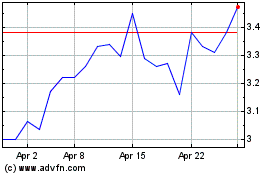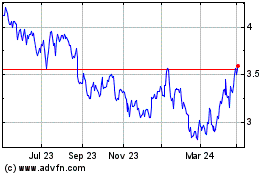SYDNEY—The chief executive of BHP Billiton Ltd., the world's
biggest miner by market value, sounded a more positive tone on
world commodity markets, saying there are early indications the
glut in some sectors is easing.
A global oversupply of everything from iron ore and copper to
oil dragged prices early this year to lows many resources
executives said they had never expected, and for BHP, pushed it to
its worst-ever annual loss. The global mining sector responded to
weak prices by paring output for some commodities and shelving big
new projects, which may be starting to pay off.
"We have seen early signs of markets rebalancing," BHP Chief
Executive Andrew Mackenzie said on Wednesday, as the miner reported
that its own production of commodities was mostly lower in recent
months on the same time a year ago.
The price of iron ore is up 35% so far this year, as the pace of
growth in supplies has slowed, while metallurgical coal prices have
tripled because of curbs to production in China, both a major
producer and consumer of the steelmaking fuel. Prices for oil and
many metals have also improved.
So far, mining executives have been coy on calling a nadir for
commodities, which have been largely spiraling lower since 2011.
Markets were pummeled by large increases to supplies, encouraged by
the high prices of a China-led commodities boom.
BHP as recently as August raised concerns about persistent
abundant supplies of crude oil and metals such as copper, while
rival Rio Tinto PLC at the same time cautioned on the threat from
low global growth and what it called an unsustainable credit-fueled
bounce in China.
On Wednesday, BHP signaled confidence that world petroleum
markets are on the road to recovery. Prices in recent times have
been buoyed by promises of an output cut from the Organization of
the Petroleum Exporting Countries, which could help draw down the
vast oversupply of oil that has flooded world markets.
"Fundamentals suggest both oil and gas markets will improve over
the next 12 to 18 months," Mr. Mackenzie said.
"Iron ore and metallurgical coal prices have been stronger than
expected" already, he said, "although we continue to expect supply
to grow more quickly than demand in the near term" for those
commodities.
While miners including Glencore PLC have made substantial cuts
to production at existing operations, BHP's own output of many
resources has slowed as deposits are depleted and it holds back on
new projects, waiting for signs of an upturn.
BHP said its petroleum division produced 55 million barrels of
oil equivalent in the three months through September. That was down
15% on-year after it pulled back on drilling in the U.S. because of
weak prices.
Thermal coal output was down 4% while copper output was down 6%.
BHP separately signaled it may have to downgrade its projections
for the large Olympic Dam copper mine in southern Australia after
the operation was halted by a blackout late last month.
Meantime, BHP reported iron-ore production of 58 million tons,
unchanged on the year-earlier period when excluding the Samarco
Mineraç ã o operation in Brazil, which it owns with Vale SA and
which was halted in November after a catastrophic dam failure. Iron
ore accounts for the biggest portion of BHP's sales.
Production of metallurgical coal was just 1% higher, the company
said.
Some brokers have raised concerns about how quickly miners like
BHP will be able to respond to a recovery in prices.
BHP has only four major projects under way, two of which are
virtually completed, versus 17 developments under way this time
three years ago. "BHP remains ex-growth," meaning it is no longer
increasing in size, Deutsche Bank said in an Oct. 17 note.
BHP has singled out oil-and-gas, a newly favored sector for the
Anglo-Australian company, as one area in which it has the
capability to ramp up drilling quickly, though, in line with
prices.
The miner also hasn't ruled out buying growth. Mr. Mackenzie has
previously described the miner as "very active" in looking for
possible acquisitions, particularly of copper mines or oil fields,
but so far no large deals have been made.
The company has argued that its focus is on increasing value by
working existing operations harder, over investing in new projects
with the aim of simply increasing total output of the group, which
shrank last year with the spinoff of a suite of unwanted mines and
smelters into South32 Ltd.
For now, better prices are a welcome boon. "The combination of
steadier markets, continued capital discipline, improved
productivity" and higher production generally than in the past
should underpin a strong flow of cash this fiscal year, Mr.
Mackenzie said on Wednesday.
In August, BHP estimated it could double free cash flow in the
year through June, 2017, if commodity prices remained stable.
Write to Rhiannon Hoyle at rhiannon.hoyle@wsj.com
(END) Dow Jones Newswires
October 18, 2016 23:05 ET (03:05 GMT)
Copyright (c) 2016 Dow Jones & Company, Inc.
South32 (ASX:S32)
Historical Stock Chart
From Mar 2024 to Apr 2024

South32 (ASX:S32)
Historical Stock Chart
From Apr 2023 to Apr 2024
